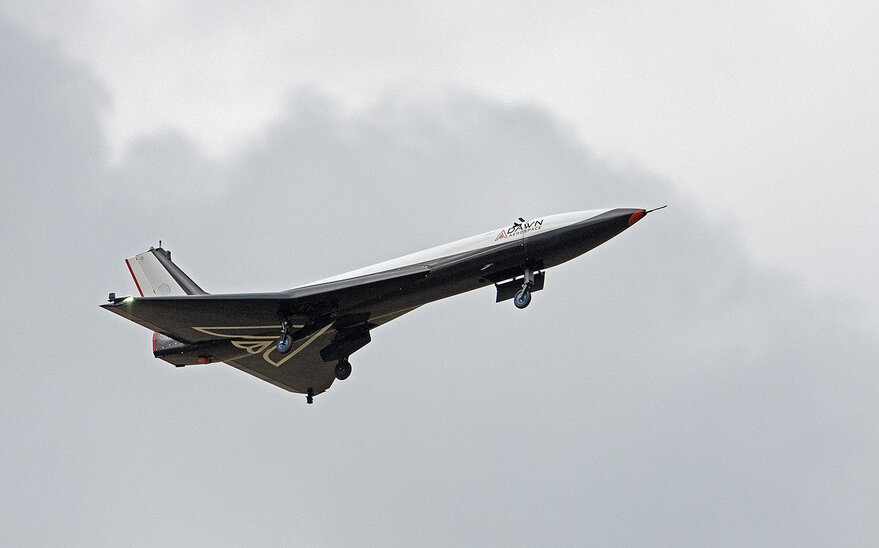
SAN FRANCISCO — Dawn Aerospace completed its first series of rocket-powered flights last week.
Mk-II Aurora, a scaled down version of the spaceplane Dawn is developing for commercial operations, took to the skies March 29, 30 and 31 from New Zealand’s Gentanner Aerodrome.
The initial test campaign validated key flight systems and demonstrated the benefit of rapid reusability, Dawn CEO Stefan Powell told SpaceNews.
During the first flight, the Mk-II Aurora consumed more fuel than anticipated due to a leak in the propellant system. The next day, Dawn engineers removed the Mk-II Aurora engine, took out the oxidizer tank and found the leak.
“It was reasonably trivial to fix that, put it back together and fly again,” Powell said. “That speaks to just how different this concept is than a regular rocket. Not only would you have not gotten the vehicle back, but you wouldn’t have been able to execute a repair and show that it works in the same day.”
Funding spaceplane work
Dawn, a space transportation company based in New Zealand, the Netherlands and the United States, is funding spaceplane development with revenue from sales of small satellite propulsion systems, government grants and investment. Dawn raised $20 million late last year.
Prior to testing the recent testing campaign, Dawn flew Mk-II Aurora with jet engines. The company announced certification March 24 from the New Zealand Civil Aviation Authority to begin rocket-powered flights.
Dawn’s goal is to operate the Mk-II Aurora like an airplane with multiple daily flights taking off and landing on runways.
“To have demonstrated rapid reusability in the first tests is proof of our core philosophy, and confirmation that rocket-powered vehicles can be operated just like commercial jet aircraft,” Powell said in a statement. “This fact allows us to rapidly test now, but in the future, it will completely revolutionize the economics of space access.”
Iterative test campaign
Rather than striving for speed or altitude on early flights, Dawn is taking an iterative approach to flight testing. The Mk-II is designed to reach an altitude of 20 kilometers. During initial flight tests, the vehicle flew to roughly 2,000 meters and traveled at a maximum speed of 315 kilometers per hour.
“We should get the limits of the Mk-II sometimes this year,” Powell said. “Then we’ll move on to the next version of this aircraft.”
The next version, Mk-III, is a two-stage spaceplane with an expendable second stage.
“The Mk-II demonstrates the technology,” Powell said. “We’ll size the payload of the Mk-III to make sense for the market.”
Related
ncG1vNJzZmiroJawprrEsKpnm5%2BifKWt1qdkn6SZmsBuvs6cop6sXaW8uLHRnptmq6CWsKa8y5qlnmc%3D